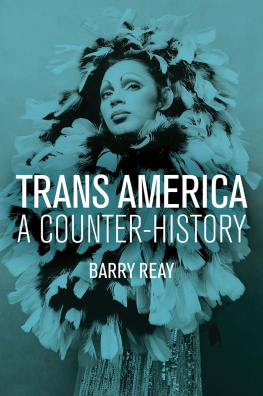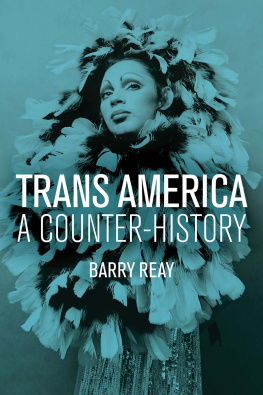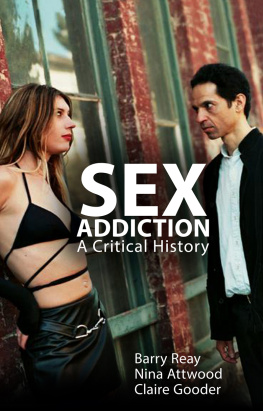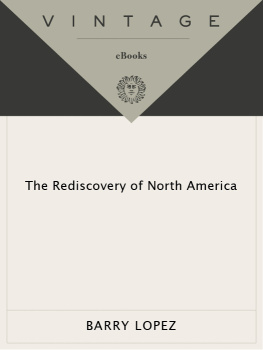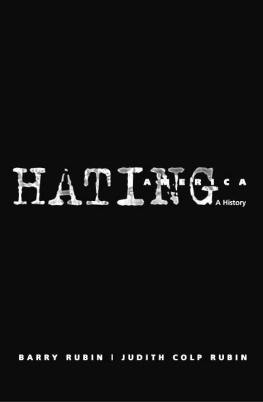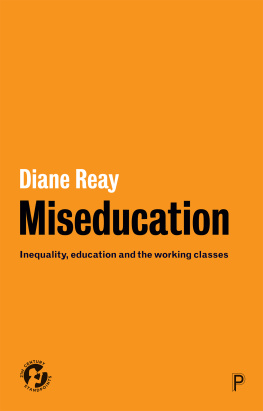Barry Reay - Trans America
Here you can read online Barry Reay - Trans America full text of the book (entire story) in english for free. Download pdf and epub, get meaning, cover and reviews about this ebook. year: 2020, publisher: John Wiley & Sons, Inc., genre: Romance novel. Description of the work, (preface) as well as reviews are available. Best literature library LitArk.com created for fans of good reading and offers a wide selection of genres:
Romance novel
Science fiction
Adventure
Detective
Science
History
Home and family
Prose
Art
Politics
Computer
Non-fiction
Religion
Business
Children
Humor
Choose a favorite category and find really read worthwhile books. Enjoy immersion in the world of imagination, feel the emotions of the characters or learn something new for yourself, make an fascinating discovery.
- Book:Trans America
- Author:
- Publisher:John Wiley & Sons, Inc.
- Genre:
- Year:2020
- Rating:5 / 5
- Favourites:Add to favourites
- Your mark:
- 100
- 1
- 2
- 3
- 4
- 5
Trans America: summary, description and annotation
We offer to read an annotation, description, summary or preface (depends on what the author of the book "Trans America" wrote himself). If you haven't found the necessary information about the book — write in the comments, we will try to find it.
Trans America — read online for free the complete book (whole text) full work
Below is the text of the book, divided by pages. System saving the place of the last page read, allows you to conveniently read the book "Trans America" online for free, without having to search again every time where you left off. Put a bookmark, and you can go to the page where you finished reading at any time.
Font size:
Interval:
Bookmark:
In 2017, in the aftermath of Donald Trumps victory, a cohort of trans-masculine, trans-feminine, and gender-nonconforming people from New York, San Francisco, and Atlanta told Walter Bockting and his fellow researchers that they remained resilient but feared for their future. Theirs was an accurate appraisal of the vicissitudes of trans history. Greater trans visibility, the so-called tipping point, brought with it the possibility (especially in the light of the 2016 election) of reaction: a backlash. One of the survey group, a young trans man from New York, referred to a two steps forward, one step back problem; and the researchers invoked Martin Luther King about a long road to justice. Yet Bockting and his colleagues could have turned to trans history itself. As we have seen in this book, an earlier period of trans visibility in the 1960s and early 1970s faced a vehement backlash right at the time that trans, in the form of what was termed transvestism and transsexuality, seemed to be so ascendant.
It is a complex trans past. I have written elsewhere about the gay trans man Lou Sullivan, but he is important for this book, too.. His diaries record an oscillation between feelings of transvestism and of transsexuality; it was certainly no easy narrative of a man trapped inside the body of a woman, the plot that trans men were encouraged to adopt during that period. Sullivan worried that the construction of a penis would affect the ability to orgasm. He vacillated between discomfort with ambiguity and anxiety about giving in to what he thought, and feared, was fantasy.

Lou Sullivan, 1988.
The story of Sullivan is compelling because it threatens the very categorization that his biographical sketch posthumously forced him into. His diaries and correspondence with other trans people reveal that he moved in a world of gender and sexual indecision and flexibility. Lou knew a trans man who had lived with a trans woman for thirteen years, when, for much of that time, she was he and I [the trans man] was she. We had heterosexual sex for 7 years. The man was interested in having sex with women but was also attracted to Male to females Women with penises. Lou was puzzled by this irresolution:
You stated I try to think what it would be like to be gay as I never had sex with a genetic female. But if you feel like a man and have only had sex with men, wouldnt that make you a gay man?? Im confused. You love women but have never had sex with them? Is it that you feel like a man, and just WANT to have sex with a female that makes you heterosexual??? Help me understand what you mean.
Another friend oscillated between maleness and femaleness and the names that proclaimed their identity. She sought and then decided against surgery (admittedly when it was refused by Cook County Hospital), stopped taking hormones, went back to them again, and then stopped. She threw out her womens clothes. She cut her hair short. Im really back? (forward!) to being MALE. Lou had a photograph of her on a Florida beach, an image of an attractive, bare-breasted, tanned woman. She and Sullivan discussed their inability to fit categories. Were further [a]head than any of those TVTSs. To be able to incorporate your ambiguity is far more revolutionary & futuristic than trying to resolve it along some obscure conventional lines. They talked of living in the middle, being neither male nor female.
Lou corresponded with a lesbian who was attracted to trans men, with a trans man who had sex with bisexual men but who also turned tricks as a gay male, and with a trans man who had had another trans man as a lover Do you use your vagina during sex? (I mean during male/male sex).
Those with whom Lou/Sheila had sex, as both/either Lou/Sheila, are as interesting in their flexibility as our main protagonist. In 1980, when he was undergoing hormone treatment, Sullivan went to a bar and picked up a drag queen. Sullivan paid for their drinks: She sat down & I was the man, she was the loose woman. They went back to Lous place for sex. The drag queen said to Lou that he looked a little effeminate (she told him later that she had thought that he was intersex). The drag queen had anal sex with Lou and told him that he was going to make a really great gay boy!
Sullivans diaries provide a sense of the fluid sexual identities in San Francisco in the late 1970s and the 1980s as the transsexual moment turned into transgender. The then Sheila went to a drag bar and groped and kissed a black queen. A young man joined them and then became agitated when he discovered that the queen was male. He became even more disturbed when he was told that Lou was female: he had thought that the female was male and the male female. Sullivan writes in his diary that it would not have made any difference: it would have been a threesome. God, if hed ve done a 3-way with a girl & a guy, why not after we turned out to be a girl & a guy anyway?
We have seen trans in its various forms what Rogers Brubaker has termed the trans of migration (transsexuality), the trans of between (gender blending), and the trans of beyond (those who transcend categories, though, ironically, they find a new category as nonbinary). We have examined the time before transsexuality, when those aware of their nonconforming gender managed an existence even sought out surgical and hormonal solutions under a cultural framework where inversion (as it was known) was interpreted as a species of homosexuality. We have encountered people who lived their lives almost oblivious to the medical model, or who consciously carved out ways of being and seeing that did not adhere to the dominant categories of gender and sexuality or of transsexuality and transgender. We have met both those adept at negotiating their way past the gatekeepers and those who avoided them completely: self-help is a recurring theme in trans history. Trans was formed in the streets as much as it was in the consulting room and surgery. We have noted the importance of cross-dressing in trans before trans, the transsexual moment, and the transgender turn a neglected, vital strand in both American and trans history. We have located the importance of trans people of colour, despite the dominance of whiteness in much trans imagery. We have discovered that the sexual and gender flexibility viewed as so central to the transgender turn had earlier precursors. We have established the importance of sexuality in the history of trans. Despite the eagerness of some trans observers to separate gender from sexuality, bodily variety was accompanied by diversity of desire. We have charted constantly shifting concepts of trans from a time before it was named to its current visibility, identities blurred and challenged to the point where trans itself seems on the point of inaugurating a new nonbinary turn.
Above all, we have seen that it is important to recognize transgender as process. The Canadian, gender-nonconforming performer Rae Spoon has outlined how they have lived such a gender and sexual history, first as a woman attracted to other women (lesbian), then as a trans man dating women (heterosexual), then as a man with male partners (gay) sometimes cis men, sometimes trans men and then as gender-neutral, using the personal pronoun they, what they refer to as retiring from the gender binary. It is an apt summary of trans history.
I began this book with a criticism of the historical amnesia of some trans studies, so it is only fair to give credit where credit is due. Juliet Jacques, who was a teenager in England in the 1990s, tried to make sense of her identity, almost oblivious to the era in which she lived: Im gay and I wear womens clothes I thought that made me a drag queen. She appears to have started using the word transgender slightly before she was introduced to the work of Kate Bornstein in 2004, ten years after it was first published. Jacques read culture intelligently, searching not exactly for role models but for those who might hold a clue to her own gender identity, including some names in this book: Andy Warhols cross-dressed superstars, Jayne Countys memoir, Jack Smiths
Font size:
Interval:
Bookmark:
Similar books «Trans America»
Look at similar books to Trans America. We have selected literature similar in name and meaning in the hope of providing readers with more options to find new, interesting, not yet read works.
Discussion, reviews of the book Trans America and just readers' own opinions. Leave your comments, write what you think about the work, its meaning or the main characters. Specify what exactly you liked and what you didn't like, and why you think so.

